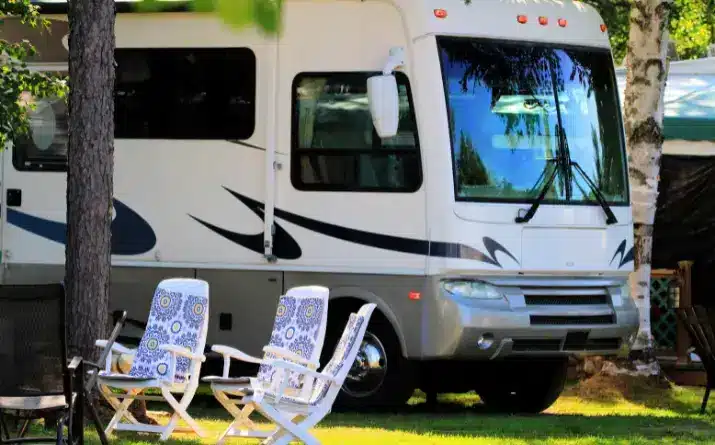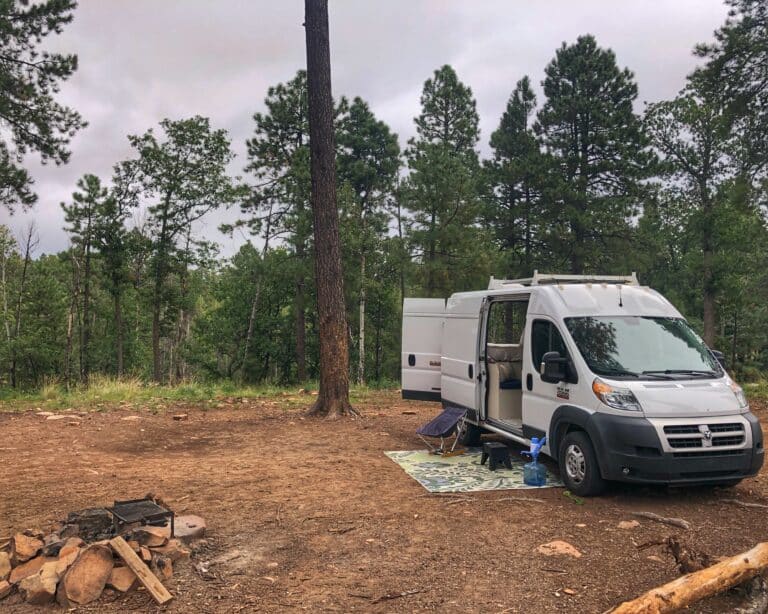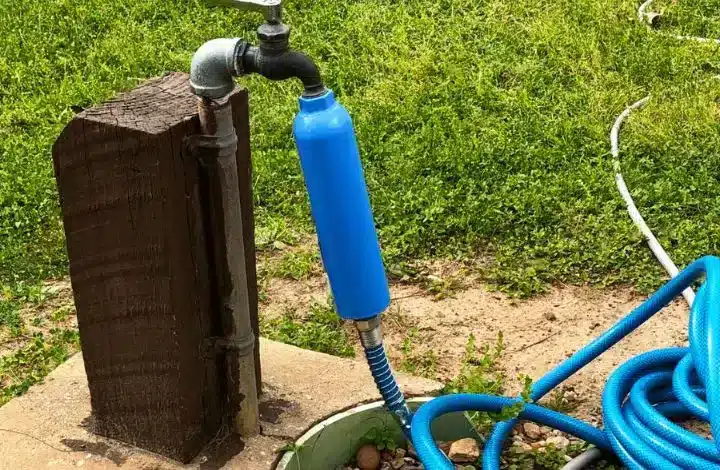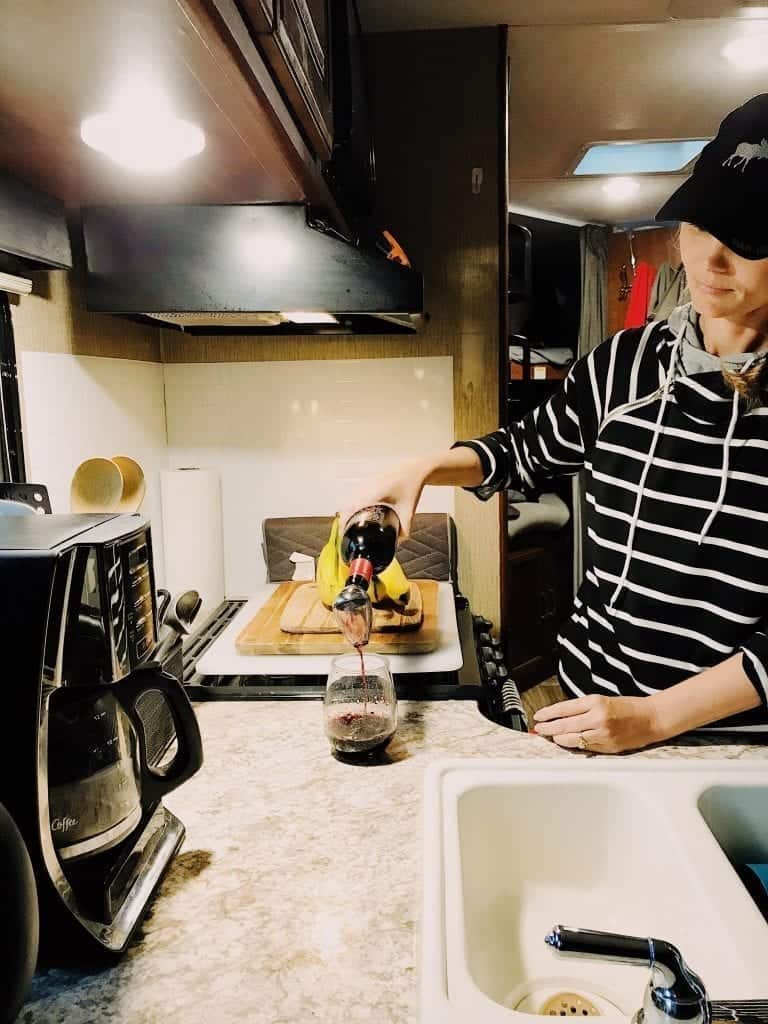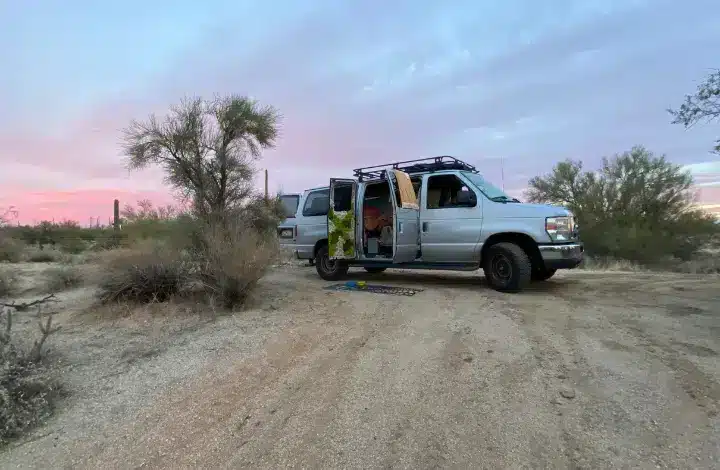The Cost of RV Living: A Sample Monthly Budget
My husband and I have been living in our motorhome for the past five years. Before that, I lived in a travel trailer on my own for four years. So, after nearly a decade of RV living, and a few years of diligently tracking every expense, I’m going to offer a sample monthly RV living budget.
The hardest thing to account for when suggesting the cost of RV living is the style of travel that you choose. We have lived at RV parks, we have exclusively boondocked, we have done a combination of both. One thing we’ve never done is stay at luxury motorcoach resorts at the nightly rate.
So I’ll preface this post by saying that we are budget-minded RVers. We like staying in beautiful places and we like nice resorts now and then. But, we originally got into RVing as a way to live minimally and save money. So please know, it is possible to spend more or less money than we do. I hope seeing our real life expenses of life on the road helps you budget and prepare for your own adventures.
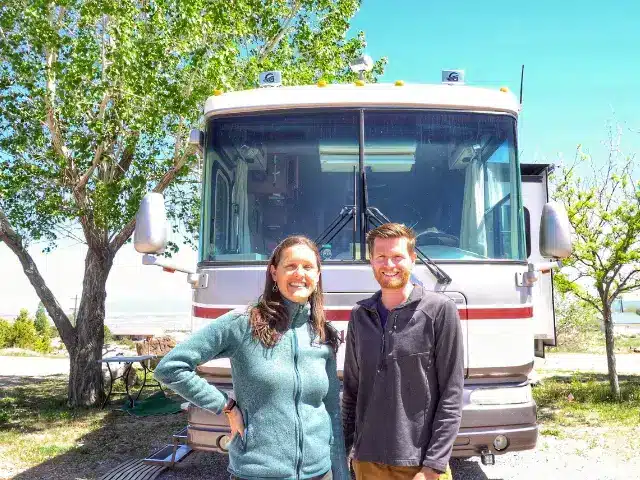
What is In Your RV Budget?
Great question! For the purposes of this budget, we exclude our personal vehicle, food and drink, and other personal expenses like cell phone bills, health insurance, etc. These are the additional expenses you could expect to incur due to living in an RV, regardless of whether you still own a home.
To create a total living expense budget, add in your vehicle, food and drink, and personal expenses on top of these RV specific expenses.
RV Parts, Supplies and Repairs
In our case, this expense is about $4,000 per year or $333 per month. We have consulted many other full-time RVers. The consensus is that a good budget to save for RV maintenance and repairs is at least $300/mo.
If you are living in an RV full-time, things are going to fail. The more you use it, the more likely you will have to repair or replace some parts. I do think if you move a lot like we do (about every week or two), you are more likely to have a higher repair bill. If you were to park your RV in one spot for an entire season, you might not have any issues the whole time you are stationary.
So if you are planning to park your RV in a resort for the winter for example, your paid campsite budget may be higher than ours, but your repair costs will likely be much less. Perhaps these two things would even out, in which case the overall monthly budget would remain about the same.
Fuel Costs
Fuel is our second largest budget category. We drive a 42-foot motorhome that gets eight miles to the gallon. Your fuel economy of course could be better, or perhaps you’ll move less frequently than we do.
We spend about $3500 per year or $292 per month on diesel. This is only the fuel for the motorhome, we do not include our toad gas in this budget because we drive it about as much as we would if we lived anywhere.
Again, if you were to park in one spot for the entire winter, obviously your fuel cost would be zero. And again, that money saved could probably be put toward the paid camping budget category.
Camping Fees
I would guess that the combined total of these top three categories (maintenance, fuel, and campsite fees) run about the same for most RVers. Some RV owners may save on paid camping but spend more on fuel and supplies, while others may save on fuel and pay more for parking. Regardless, I think these are probably the top three categories for any RVer, no matter what RV travel style you prefer!
Boondocking to Reduce Camping Costs
We pay just over $2100 per year on paid camping, or about $175 per month. This figure is probably low for most RVers, as we try to boondock as much as possible. We balance time on the East Coast with months of free boondocking out West. This is only possible because of a $10,000 investment in a robust solar power system that we installed.
Look for RV Parks with Monthly Rates
Before we had the solar setup installed, we would seek out monthly stays at RV parks with hookups. The cheapest one we ever had was $175/mo, and the most expensive one we stayed at was $880/mo. Both of these campsites were in Arizona. On average, the monthly cost we incurred to stay at an RV park was around $600/mo.
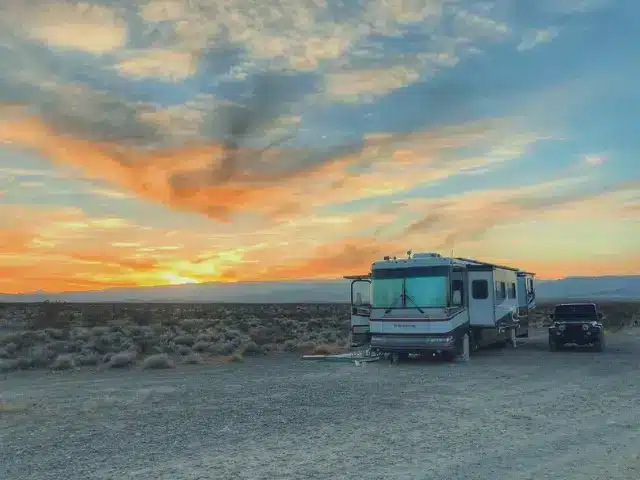
Obviously at $80-100 per night like many RV resorts charge, you would blow through a $600 budget in a single week. So seeking out RV parks with monthly rates is the way to go if you need or want full-hookups. Since we both still work full-time, we found a month to be a perfect amount of time to get to know a new place.
We like to camp at state parks, national forests, army corp of engineers parks, hip camps, fair grounds, and any beautiful area that doesn’t break the bank. If you’d prefer not to stay in one place for a month at a time, you could piece together nightly or weekly stays at these types of parks for about $900 per month or $30 per night.
Insurance
In our lives overall, insurance is our biggest expense (car insurance, RV insurance, health insurance, etc.). But when only looking at RV-related expenses, this one comes in at number four. We have an older 2004 motorhome and our annual policy is $1450 per year or $120 per month.
We have a full-time RVer policy, which covers our belongings inside the RV, similar to a renter’s insurance policy. We have roadside assistance through AAA that is associated with our personal vehicle as well. Many RVers will purchase an RV-specific roadside assistance coverage, so include that expense in your budget if you intend to do so.
RV Rallies and Club Memberships
Some RVers may not have any expenses in this category. For us, this is one that we plan for and would never try to skimp or save on. What good is life on the road if you don’t have anyone to share it with?
We typically attend two or three RV events per year. Our average cost is $700 per year or $58 per month. The real cost for two or three events for us is about $1200 per year, but we usually volunteer at least part of the time to reduce our expense of attending.
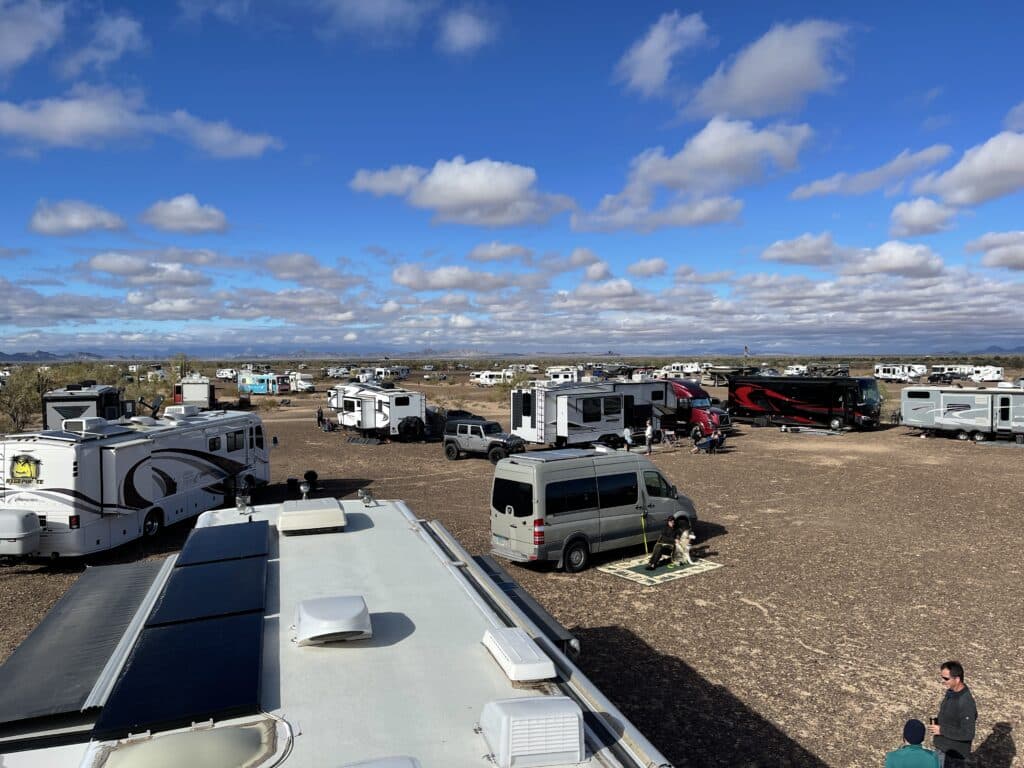
RV Club Memberships
We also include our RV club membership in this category, as we attend events through our club (Escapees/ Xscapers) and we’re required to have the membership active in order to attend the events.
You should include the annual fee for any other memberships, even if you don’t plan to attend events. Perhaps you belong to a club related to your RV manufacturer like Grand Design or Airstream. Or perhaps you’ve joined FMCA or Good Sam.
Propane Expense
If you’re coming to RV life from living in a sticks and bricks, this might be something you forget to plan for. Propane is our most expensive utility as a full-time RVer. Our propane fuels our heating system, our hot water heater, and our fridge. Our average annual propane cost is just over $600, or about $50 per month.
Boondocking vs Campground Hookups
We boondock at least half of the year and during that time our propane is running all day every day to power our RV refrigerator. If you’re plugged in at a campground, you might be able to run your heat with electric space heaters, your hot water on electric, and your fridge on electric. You could then remove this cost entirely and put that savings toward your paid camping.
Dump & Fill Stations
Again, because we’re big boondockers, we have to budget to pay for dump stations and water fill ups. If you’re at a full-hookup campground, these costs will be rolled into your paid camping category. We spend about $110 per year or about $10 per month for dump stations.
We have figured that we need to dump our tanks and fill our water about 30-35 times per year. So we try to plan our routes so that we pay for camping after a stint of boondocking, so we don’t always have to pay for dump stations. Last year we had to pay about ten times.
The average dump station cost is about $10 just to dump, and about $5-10 extra to fill water, or about $20 to dump tanks and fill fresh water. The past few years we’ve had state parks passes that not only gave us camping discounts, but also provided free dump stations even if we weren’t staying at the site.
Tolls
Whether or not you pay tolls in your RV lifestyle will depend entirely on what part of the country you travel through. Our average annual toll cost is $66 per year. That said, we have paid over $80 for one toll (thanks New York). Beware, tolls can be quite expensive in an RV.
We like to use the Uni Toll Pass that works in 19 states out East. That way we don’t have to worry about carrying cash for tolls that could cost hundreds of dollars.
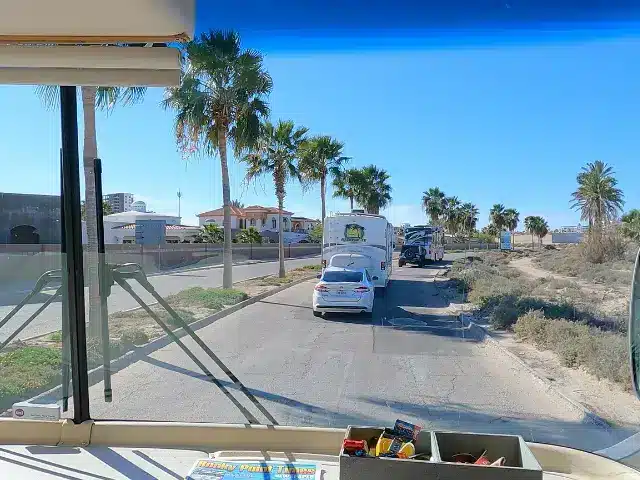
Is There Anything You Would Add?
Our average monthly budget for RV living is $1,070. When people ask me if RV living is cheaper than traditional house-based living, I generally say “no”. But if you can rent or own in a place you love for about $1,000 per month, RV living will NOT be cheaper.
Budgets are personal. Consider your travel style and what you want to get out of RV living. Only you can figure out what your monthly budget will be for RV living. Still, I hope this outline gave you some things to think about and a starting point for creating your own budget.
Happy trails!
Related Reading
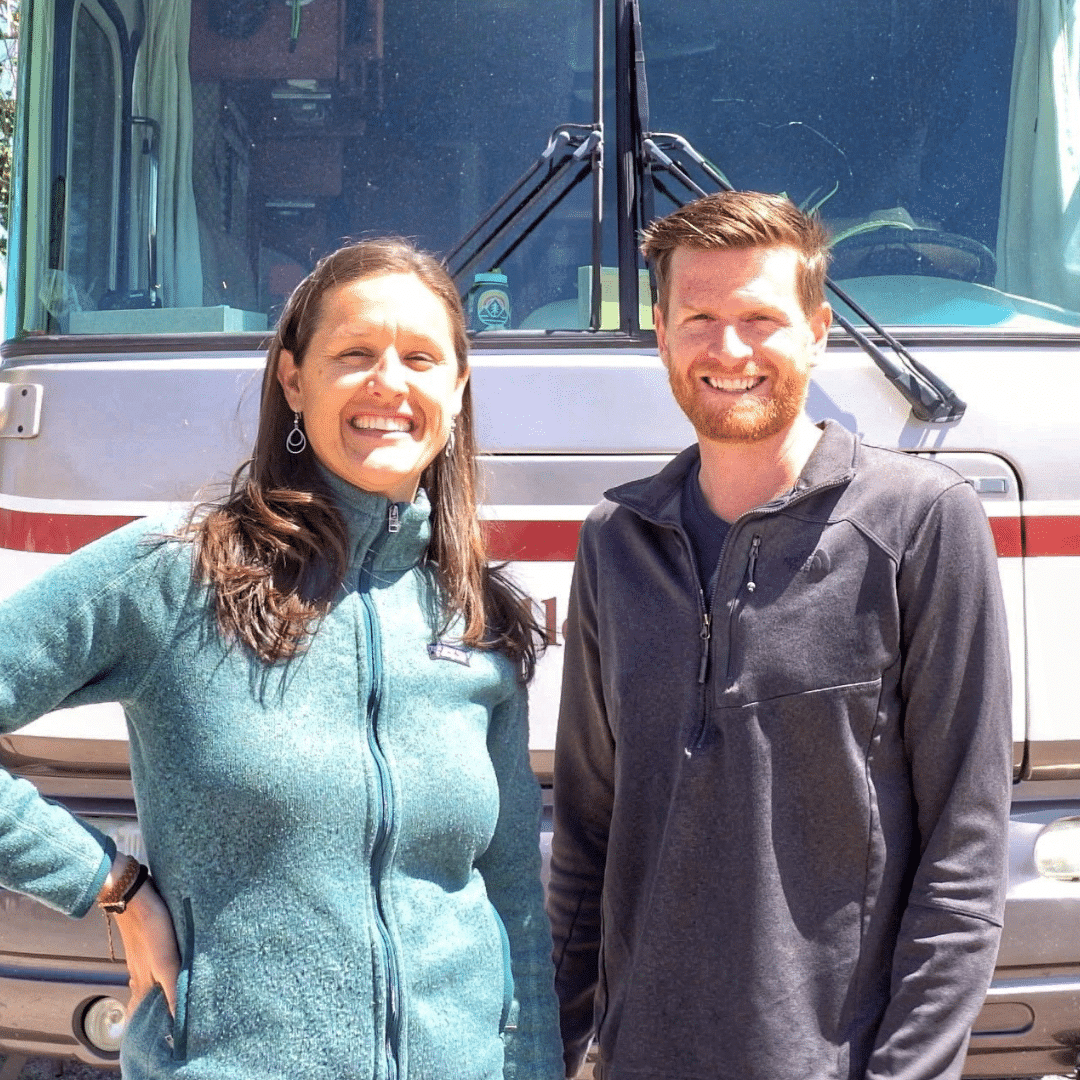
Kristen Bates lives & works from her RV, primarily boondocking off-grid. She owns and operates a women-led travel company, Legit Trips. Kristen loves to explore new places and inspire others to do the same. If she’s not typing away on her laptop, she’s off on an adventure- hiking, biking, or SUP boarding. You can follow her RV adventures @PerpetualMoves and learn more about her travel company at LegitTrips.com.


